Martin Edwards's Blog, page 61
March 13, 2022
Back to the Book Fair
Yesterday I drove across the Pennines to Harrogate, where a PBFA book fair was being held in the airy Yorkshire Pavilions - a good venue, I think. It seems scarcely credible, but it's more than two years since I last went to a book fair - at York Racecourse. None of us imagined back in January 2020 what disasters were about to befall the world. So it was great to have a sense of at least some normality returning, even though times remain hard for a good many people, in Britain as well as overseas.
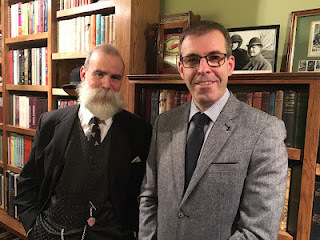
I enjoyed a chat over lunch with Paul Chapman and Mark Jones (the photo comes from their website), two experts on Sherlockiana and much else. Among other things, they host the Doings of Doyle podcast, which is well worth a listen. I first came across Paul back in the 90s when he reviewed a couple of Harry Devlin novels for the late lamented Sherlock magazine and it's good to see things going so well for him.
I also caught up with Catherine Hawley and her husband, who had a bookstall. Looking back at the blog, it's striking to think it's more than seven years since I first chatted to them both at a . Time definitely flies. They were telling me about Leeds Library, an old-established private library which I must go and visit when I get the chance.
Among other familiar and friendly faces was another great bookseller, Jeremiah Vokes, who introduced me to a colleague and fellow dealer Louise Harrison. And James Pickard, as usual, had some terrific treasures on display, including a lovely inscribed copy of Dick Francis's first novel. James has introduced me to the concept of 'shelvability', a term that is sure to crop up if and when I write another story about my book detective, Benny Morgan, who made his debut in The Traitor.
Somehow I managed to restrain myself from making any purchases, but there were some excellent books on display and it was wonderful to be back at a book fair again. The PBFA run some terrific fairs and I can strongly recommend them.
March 11, 2022
Forgotten Book - Six Queer Things
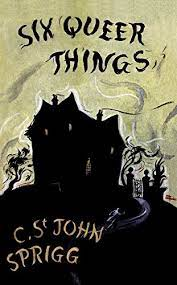
Christopher St John Sprigg packed a great deal into his life before his tragically early death during the Spanish Civil War, when he was still not quite thirty. The detective novels he wrote are varied and interesting and one can only speculate about what he might have achieved in the genre had he lived (assuming, that is,he hadn't devoted himself to Marxism and writing poetry, two of his principal preoccupations at the time of his death).
Six Queer Things was his last detective novel, published posthumously in 1937. I've read a range of reactions to the story on the internet. Some people are keen on it, others are less enthusiastic. I am in the former camp. I think it's one of his best mysteries, and although the narrative wanders about at times, the overall effect is pleasing.
At the start, we are introduced to Marjorie Easton, aged twenty, who lives with her mean old uncle, an accountant called Samuel Burton. She is planning to marry a decent young chap called Ted Wainwright, but her life turns in a dramatic new direction when she is offered a highly paid job by Michael Crispin and his sister. Crispin is a medium, of a very unorthodox kind as it proves.
It's clear that something sinister is going on - but what, exactly? The story careers along until finally murder occurs - and is quickly followed by a remarkable revelation about the victim. It seems an open and shut case of poisoning, but the stolid Inspector Morgan soon realises that there is more to the case than meets the eye. It's fair to say that this is a young man's book, brimming with energy as it bowls along, but with a few disconcerting digressions. But the energy is what counts, and I enjoyed the ride.
March 9, 2022
Back to Blackstone Fell

For the past few days, the sun has come out of hiding and I've taken advantage of the chance to relax and get out of doors after quite a hard-working winter. I've recently sent off the corrected proofs of The Life of Crime and the copy-edit of Blackstone Fell, so I've been able to enjoy roaming around a number of pleasant National Trust properties. And yesterday I revisited the spot which formed a crucial part of the inspiration for Blackstone Fell.
This is Hardcastle Crags, a wonderful wooded valley north of Hebden Bridge in Yorkshire. There's a mill, with a tea room (not open every day at present) and on my first visit, just after the original lockdown, the place swarmed with visitors on a sunny Saturday in summer. This time, despite the clement weather, it was all very quiet and I enjoyed the tranquillity.
Ideas for novels often come from various sources. The original notion for Blackstone Tower, which plays an important part in the story even though we never go inside it, came even earlier, from a visit to Salomons Tower in Kent. At one point, I thought I'd take that site as my model for the whole story, but after visiting Hardcastle Crags, I felt that a setting on the edge of the Pennines would give me just what I wanted from this particular story. The Crags were transformed into Blackstone Fell, although the idea for the caves at the base of the crag, which again play a part, came from yet another trip, to Kinver Edge.

Walking along the stream that runs through the valley yesterday, and skipping over a few stepping stones, I was reminded of a scene in the novel where Rachel Savernake ventures to the notorious Blackstone Leap. The concept of the profound dangers of the Leap came from Bolton Strid, also in Yorkshire, but some miles away from Hardcastle Crags, and said to be the most dangerous short stretch of water in the world.
But the novel begins on Blackstone Fell itself, and an attempt on the life of a journalist called Nell Fagan, who narrowly avoids being crushed to death by a falling boulder. That idea came to me after climbing up the Crags and it was lovely to revisit the scene of my fictional crime, knowing that the book is not only completed, but to be published in September. Can't wait!
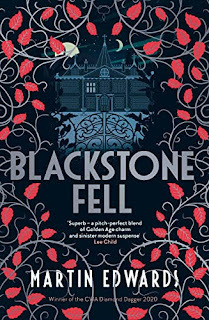
March 7, 2022
CADS 87
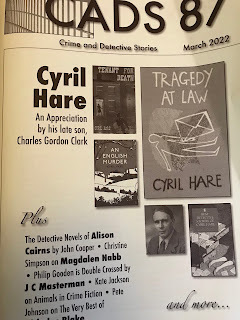
One of the beauties of Geoff Bradley's magazine (or fanzine) CADS is that you never quite know what each new issue will bring. There are contributors who feature regularly, such as Marv Lachman, Liz Gilbey, Mike Ripley, Philip Scowcroft, Barry Pike, and Jamie Sturgeon, as well as others who cover an extraordinarily wide range of subjects. As a result, I always come away from reading each new issue with something else to look out for.
This is certainly true of the latest issue, CADS 87. For instance, I was unaware of the two detective novels of Alison Cairns, which John Cooper (a sound judge) writes about with considerable enthusiasm. I was familiar with Philip Levene, the radio and TV writer whom Melvyn Barnes discusses in a fascinating piece, but I wasn't aware of the full extent of his work. As a result, I've had a chance, thanks to YouTube, to listen to a couple of his entertaining radio plays. And this in turn has led me to other radio discoveries.
One piece I was glad to see again was a long appreciation of Cyril Hare by his son Charles. Many years ago, Charles sent it to me, along with the initial pages of his father's final novel, which he wondered if I might be interested in completing. Unfortunately there wasn't enough material to build on, but it was fascinating to read. Charles died a few years ago, but his article is full of interesting observations.
My own contribution covered some material which I wasn't able to accommodate in The Life of Crime - a piece dealing with correspondence from Fergus Hume, the American writer Elizabeth Fenwick, and W.J. Burley. But there's much more to enjoy in CADS 87, including a piece by Philip Gooden on J.C. Masterman and an article by Pete Johnson about Nicholas Blake's best books. For fans of crime fiction of any vintage, CADS is a great read and a wonderful resource - strongly recommended.
March 4, 2022
Forgotten Book - The Detling Murders aka The Detling Secret
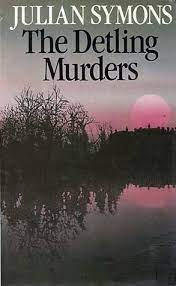
I first read Julian Symons' The Detling Murders not long after its original publication in 1982. It was the third of his Victorian mysteries, following the highly successful (and televised) The Blackheath Poisonings and the very interesting Sweet Adelaide. Both those novels drew heavily on real life nineteenth century murder cases, although they were very different from each other. The Detling Murders was different again - Symons strove not to repeat himself, hence his distaste for series characters - but I remember feeling rather underwhelmed.
For one thing, if not for the title(which was changed for the US anyway), I'd have wondered if I really was reading a murder mystery. Murder doesn't occur until we are more than half way through the story, while the second killing takes place very near the end of the book. Symons himself felt dissatisfied with the book and decided to go back to writing contemporary mysteries.
On rereading the book, however, I was more impressed. This is partly because Symons' picture of upper class Victorian society is very entertaining in its own right. The Detlings are a fading branch of the landed gentry and Sir Arthur Detling, the head of the household, is almost a caricature of a crusty old reactionary. But the family dynamics are nicely portrayed. The starting point is the news that Dolly Detling wants to marry an up and coming Liberal MP, Bernard Ross, whose background is rather mysterious. Sir Arthur isn't happy, but the couple get their way.
As usual, Symons moves the story along over a period of time, shifting focus from one character to another, so that it's not clear where events are heading. There are some Fenian dynamiters lurking in the background and shady business dealings aplenty. Roderick Detling is a gambler who has run up debts, while Nelly Detling gets herself involved with a dodgy crowd of artists (allowing Symons to write yet another bohemian party scene - he really did like writing those). The plot is carefully constructed, and stronger than I appreciated on a first reading. And as ever with Symons, the book is extremely readable. It ends up with a Christmas family gathering in rural Kent - the sort of scenario which usually opens detective stories rather than closing them. In this part of the book, as earlier, there are some nice comic touches.
The main reason why this book isn't a complete success is, I think, that Symons didn't pay enough attention to the building of tension and suspense. He sets up a series of intriguing situations but there's not as much excitement as many readers expect and indeed demand. Nor is it clear (and this is a problem in quite a few of his books) which member of his ensemble cast of characters is the central protagonist. For me, Bernard Ross is clearly the central figure and I think the story might have worked better if the focus on him had been clearer and more unrelenting. I guess Symons feared that this would reduce the surprise element of his story, but there could have been ways round that challenge. As it is, the murders and their investigation seem more perfunctory than is desirable in a detective novel. So this is a minor Symons, but it's definitely good enough to justify a read. Or two.
March 2, 2022
The Crooked Shore in paperback and ebook
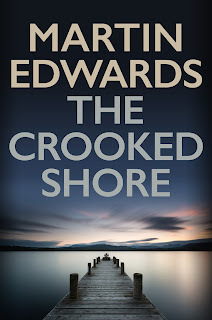
The elegant UK paperback edition of The Crooked Shore has just been published by Allison & Busby and I had a chance to celebrate this pleasing milestone last night, by giving my first library talk since before the pandemic changed the world. The venue was Barnton Library, in Northwich, a few yards from the house of one of my great friends from schooldays, Andrew Golding, whose home I visited many times, and who sadly died far too young.
I've been delighted by reaction to The Crooked Shore from reviewers and readers alike. This is my first Lake District Cold Case Mystery for six years, and just as The Dungeon House was a bit of a departure within the series, so - even more so - is this novel. Last night I was discussing the craft of crime writing and explaining why I believe that, even within a series which has been running for years, it's desirable and rewarding to keep trying new things. It keeps me fresh as a writer and I hope that readers find it adds to the enjoyment.
The danger with any series is that, even if it begins brilliantly, it can become a bit stale and formulaic. Ever since Conan Doyle tried to kill of Sherlock Holmes at the Reichenbach Falls, there have been cases of writers becoming bored and frustrated with series characters. I'm glad to say that has never happened to me and I guess part of the reason is that I write quite a varied mix of things, as well as trying to ring the changes while working on existing projects.
Because of a million other projects, I haven't got round to updating the reviews page on my website as regards The Crooked Shore, but here is some of that reaction I mentioned:
‘Detective Chief Inspector Hannah Scarlett's latest cold case involves the disappearance of a waitress from Bowness more than 20 years ago. The man charged with her murder was found not guilty but committed suicide thereafter. Now, on the anniversary of his death, his son has gone and done the same thing: walked out into Morecambe Bay and drowned himself. Meanwhile, the real killer is planning more midsummer mischief. This is the eighth of Martin Edwards's Lake District novels. As always a satisfying mystery is played out with lashings of local colour and history. Favourite line: "Through the trees peeped the dome of the eighteenth-century Round House, mocked by Wordsworth as a ‘tea canister in a shop window’”.’
Mark Sanderson, The Times Crime Club
'A splendidly imaginative plot will have you guessing and gasping until the very end.’
Mat Coward, Morning Star
‘Well-drawn characters…Readers old and new will be well served by The Crooked Shore, which delivers twists and turns against an evocative backdrop of the Furness Peninsula…The Lakeland feel is heightened throughout with fun, fictionalised locales…Martin is something of a crime writer’s crime writer. Plaudits from Lee Child, Peter Robinson, and Ann Cleeves testify to the esteem he’s held in by his peers. The Crooked Shore is playful, creative, and solid storytelling from a writer in tight control of his material.
Will Smith, Cumbria Life Book of the Month
‘One of Martin’s strengths is that even when writing a series of books, he never seems content to write the same book twice, and there is a central idea in The Crooked Shore that I am not convinced that I’ve seen before. For a long time reading the book, I wasn’t convinced of what direction the plot was moving in…All in all, this is an engrossing read with some very clever ideas running through it…an excellent novel, one of the very best in the series to date, and easily one of the best police procedural (which is sort of is) that I’ve read in a very long time.’
Steve Barge, In Search of the Classic Mystery
‘There is a splendidly labyrinthine plot and a great cast of characters, many with secrets in their past….I raced through this book and enjoyed it enormously. There were points where I thought I knew where things were going, but I was wrong-footed at pretty much every turn and the end came as a complete surprise. All this and a visit to the Lake District. What more could you ask for? Except, of course, for the next instalment.’
Christine Poulson, A Reading Life
February 27, 2022
Back to Boroughbridge
On Saturday I made a nostalgic pilgrimage to Boroughbridge. The Crown Hotel in the centre of the town was the precise destination. Matthew Booth, convenor of the northern chapter of the CWA had taken the very good decision to hold a lunch for members at the venue of the very first meeting of the northern chapter, way back in 1987. There have been many enjoyable lunches at the Crown since then, but it was my first visit for about five years.
That inaugural lunch meeting of 1987 was truly memorable as far as I was concerned. It was the first time I'd attended a social event with crime writers. I'd only recently joined the CWA, on the strength of my reviews and writing about the genre, and at the time I was working on my first novel. The chapter was the brainchild of Peter N. Walker, a former policeman who would later become famous as the creator of the stories which formed the basis of TV's Heartbeat.
That day, I met Peter and his wife Rhoda, Reginald and Pat Hill, Robert and Louise Barnard, and Peter and Margaret Lewis. They were very welcoming to me and my fiancee and they all become much-loved friends. Never in my wildest dreams, though, did I anticipate the good fortune that lay ahead for me in connection with the CWA.
Thirty-five years is a long time and Mrs Edwards and I were the only people at Saturday's lunch who were there at the first meeting, but I must say that the current members are equally convivial and it was great to catch up with old friends again. Kate Ellis had proposed that some of us make a weekend of it and this proved a great success - we all had a lovely evening in the company of Peter's successor as convenor, Roger Forsdyke and his wife Penny, staying at a nearby gastro-pub. The gorgeous weather made the whole weekend memorable in its own right. Good to be back!
February 25, 2022
Forgotten Book - Death on the Board aka Death Sits on the Board
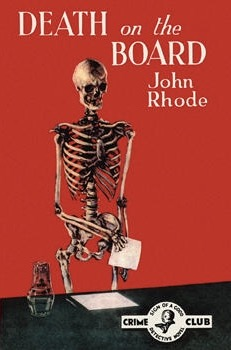
John Rhode's Death on the Board, known in the US as Death Sits on the Board, was first published in 1937, during the period when the author was at the height of his powers of invention. It's an elusive book and I'm indebted to a kind person who presented me with a collection of Golden Age mysteries, so that I had a chance to read this one (a paperback edition, not the first with the wonderful dust jacket pictured above). It's a story of multiple murder and it illustrates Rhode's strengths and weaknesses as a detective novelist.
As regards strengths, he had a flair for dreaming up ingenious methods of murder. I don't have the scientific or practical expertise and know-how to judge how credible some of his killer's schemes are, but he's usually able to persuade his readers that the murderer's m.o. is viable, always assuming a criminal with an intricate turn of mind. The crimes in this novel are very cunningly conceived. There is also some interesting social history - this book is set in an era when ironmongers like Porslin were the super-capitalists of the day.
As regards weaknesses, stodgy prose is a recurrent feature of his writing, and we certainly find ourselves on the receiving end here. The story begins with a bang, when the chairman of Porslin Ltd dies in a mysterious explosion which is put down to accident. But we then get a laborious account of relationships on the corporate board, and touches of bathos. Chapter four, for instance, ends with one character saying, 'And who'll take his place when he retires is more than I can say. Well, perhaps I'll retire myself then, and so it won't matter.' Hardly a cliffhanger. This is a tiny point, but it's typical of Rhode's literary style, and cumulatively it does become rather dull. The plain writing style contrasts with several melodramatic and unusual deaths.
When a second director of the company dies, supposedly in an accident, but again in very mysterious circumstances, the police aren't even called in. I found this hard to believe, to say the least. Only when a third director bites the dust does anyone make a serious attempt to join the dots.
In terms of murder motive, Rhode plays fair with his readers, thankfully, but this does mean that it's as easy to figure out who is responsible for the murders and why as it is difficult to figure out the mechanics of precisely how the crimes were committed. Young Inspector Waghorn gets on to the right track in terms of identifying the culprit, but gives up on it too soon. It's because I'm much more interested in human behaviour and motivation than in engineering and practical science that I find Rhode's fiction agreeable in small doses but falling short of the highest level in terms of Golden Age detection. Despite these caveats, I was interested to see how he went about the task of developing his story. Overall, this book is one of the better Rhodes that I've explored.
February 23, 2022
The Good Liar - 2019 film review
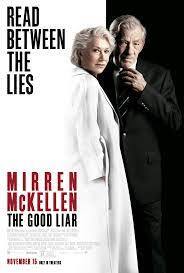
I was drawn to The Good Liar, as I guess many people will be, by the fact that the cast is led by Helen Mirren and Ian McKellen. And the first thing to say about this relatively recent (2019) film is that both are in very good form here, especially Mirren. The script by Jeffrey Hatcher is based on a novel by Nicholas Searle which I haven't come across.
The set-up is apparently simple. A woman and a man in the autumn of their lives sign up to a dating agency. They seem to have a good deal of chemistry, but it soon becomes clear that Roy Courtnay (McKellen) is not all he seems. Russell Tovey, introduced as Mirren's grandson Steven, makes clear his suspicions but Mirren (Betty McLeish) brushes them off.
Courtnay is a con man with considerable expertise in fleecing people out of large sums of money. It also emerges that he is very ruthless. His partner in crime is Vincent (Jim Carter, yet another appealing actor). We fear for Betty, but we also know that Mirren generally plays strong women. So what is going to happen?
There are plot twists that upend the viewer's expectations. Not all of them are adequately foreshadowed in my opinion (though perhaps I need to watch the film again to see if that really is a fair judgment) but they are certainly striking. As a result, the story changes direction rather abruptly and this isn't entirely satisfying. Overall, though, it's a good film with a number of enjoyable moments as well as several first-rate performances.
Hereditary - 2018 film review
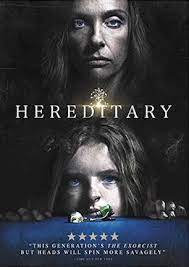
Hereditary was the first film to be written and directed by Ari Aster. He followed up with Midsommar, which I found slow-moving but very striking. The same can be said about his debut. It's over two hours long, and it's not without flaws, but it packs a punch - several punches, in fact. And like Midsommar, it's clearly superior to your average horror film. Aster is an ambitious writer and director, and aiming high brings rewards.
The film begins in the aftermath of the death of Ellen, a matriarch who clearly exerted a profound and questionable influence over her daughter Annie (Toni Collette). Annie is a miniaturist, and her work gives Aster the opportunity for a number of haunting visual effects. She's married to Steve, a part played with great restraint by Gabriel Byrne. Steve is a psychiatrist, but the film doesn't give us much confidence in his professional skills. The couple have two children, 16 year old Peter and the rather weird 13 year old Ellen, who was devoted to her grandmother.
An incident occurs which is so shocking that I'm reluctant to give a spoiler, although this does inhibit my discussion of the film. Suffice to say that Aster's presentation of grief is compelling. Annie is befriended by an older woman called Joan (Ann Dowd, who was equally excellent in a very different role in the remake of Rebecca) and gets involved in the murky world of seances.
Midsommar is a film that repays more than one viewing and the same is true of Hereditary. I didn't 'get' everything about either film first time around. Maybe that's my fault, a sign of lazy viewing, but I prefer to think that it's a tribute to Aster's skill and the depth of his vision as a storyteller. The endings of both films are, in some respects, over the top, but that's permissible in a horror film, and Aster is interested in something more important than cheap thrills. This is another haunting movie and I'll be interested to watch it again.



